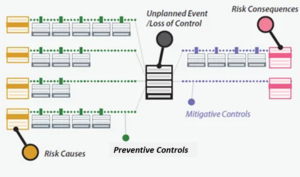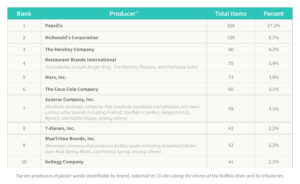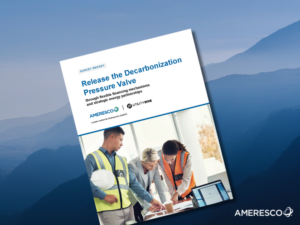
The State of Decarbonization: Progress in US Commercial Building 2023 report is a first-of-its-kind update on the U.S. commercial building industry’s progress on decarbonization. Released at COP28 by the US Green Building Council (USGBC) in partnership with ARUP, the landmark report’s analysis provides a national look at where the U.S. is relative to the greenhouse gas reduction goals set by the Paris Agreement.
The good news? U.S. buildings are on average 26 percent more energy efficient than they were in 1990, using 37 percent less carbon per square foot.
The bad news? The progress in energy efficiency is entirely canceled out by the development of new buildings and their additional carbon emissions.
The overarching call for action is clear: All new buildings need to be near carbon-neutral and existing buildings need deep-energy retrofits across all building types and regions.
Success to scale: Heat pump installations
2022 was the first year that heat pumps outsold gas furnaces, and new research in 2023 showed that replacing a gas furnace with a heat pump could reduce climate pollution by up to 93 percent in each of the 48 continental states. Heat pumps are a proven success at lowering carbon emissions, but they are not yet adopted at scale. Over two-thirds of buildings still use fossil fuels for heating.
The opportunity to reduce greenhouse gas emissions by scaling the adoption of heat pumps is huge. According to the USGBC report, upgrading heating and cooling systems in existing buildings rather than building new "will save both 94 percent embodied emissions and 31 percent operational emissions due to increased system efficiency for a total of 61 percent reduction in emissions."
Opportunity to leverage: IRA utilization
Funding and resources contained in the 2022 Inflation Reduction Act "are projected to reduce U.S. greenhouse gas emissions by 20 percent below a non-IRA scenario by 2035," the USGBC report found. However this projection only becomes a reality if the building industry uses the funding programs; in fact, with high participation "the law could enable the building sector to meet its proportional share of the U.S. Paris target early, by 2029," the report found.
But currently money is being left on the table for building owners and developers to receive if they apply (even retroactively for completed projects), said Linda Toth, one of the main authors for the USGBC report.
For example, the 179D Commercial Buildings Energy-Efficiency Tax Deduction has almost tripled under the IRA, going from $1.80 to $5 per square foot. 179D alone could provide tax savings of $66 billion for energy efficiency retrofits to existing buildings. That is equivalent to about 35 percent of the money spent on building renovations in 2022.
Two other large pots of money that will become available in 2024 are the EPA Climate Pollution Reduction Grants and EPA Greenhouse Gas Reduction Fund which together total $25 billion in funding.
Problem to solve: Empty offices
Over $1.5 trillion in U.S. commercial real estate debt is expected to mature in 2025. With high interest rates and 20 percent of offices in the U.S. sitting empty, this raises the specter of a potential banking collapse. Decarbonizing these offices while renovating them to meet today’s tenant demands presents a huge opportunity.
Renovation spending is projected to increase up to 11 percent each year by 2027. This investment could create jobs, revitalize neighborhoods and mitigate climate change. In New York City, spurred on by zoning reforms and tax incentives, developers have converted 20 million square feet of office space into residential housing, thereby doubling the local residential population. The White House reports that "15 percent of commercial district office buildings in the 105 largest U.S. cities are suitable for residential conversion, offering the potential to add 171,470 units, or almost one half of 2022’s yield of units in multifamily buildings."
Our collective response to a global call to action
The Building Breakthrough, launched at COP28 by 28 countries including the U.S., set a new industry specific goal: "Near-zero emission and resilient buildings are the new normal by 2030."
To reach this ambitious goal we need a heightened sense of urgency and resolve throughout the building sector, from project kick-offs and design charrettes to jobsite trailers and board rooms.
We are here to help. Please reach out to me to share how I can support your building decarbonization efforts. You can reach me at [email protected].
- SEO Powered Content & PR Distribution. Get Amplified Today.
- PlatoData.Network Vertical Generative Ai. Empower Yourself. Access Here.
- PlatoAiStream. Web3 Intelligence. Knowledge Amplified. Access Here.
- PlatoESG. Carbon, CleanTech, Energy, Environment, Solar, Waste Management. Access Here.
- PlatoHealth. Biotech and Clinical Trials Intelligence. Access Here.
- Source: https://www.greenbiz.com/article/commercial-building-industry-faces-milestone-year-2024
- :has
- :is
- :not
- :where
- $UP
- 11
- 15%
- 20
- 2022
- 2023
- 2024
- 2025
- 2030
- 26
- 28
- 31
- 35 percent
- 35%
- 80
- a
- About
- According
- across
- Act
- Action
- add
- Additional
- adopted
- Adoption
- Agreement
- All
- almost
- alone
- ambitious
- analysis
- and
- Apply
- ARE
- At
- authors
- available
- average
- Bad
- Banking
- BE
- become
- becomes
- being
- below
- Billion
- board
- both
- Building
- but
- by
- call
- CAN
- canceled
- carbon
- carbon emissions
- Carbon-neutral
- change
- Cities
- City
- clean
- clean energy
- clear
- Climate
- Climate change
- Collapse
- Collective
- commercial
- commercial real estate
- Completed
- contained
- continental
- Conversion
- converted
- cop28
- could
- Council
- countries
- create
- Currently
- Debt
- decarbonization
- demands
- Design
- developers
- Development
- district
- doubling
- due
- each
- Early
- efficiency
- efficient
- efforts
- EIA
- emission
- Emissions
- empty
- enable
- energy
- energy efficiency
- entirely
- EPA
- Equivalent
- estate
- Ether (ETH)
- Even
- example
- existing
- expected
- faces
- fact
- Feet
- First
- Foot
- For
- fossil
- fossil fuels
- found
- from
- fuels
- funding
- GAS
- Global
- goal
- Goals
- going
- good
- great
- Green
- greenhouse gas
- Greenhouse gas emissions
- Half
- Have
- heightened
- help
- here
- High
- House
- housing
- How
- However
- HTTPS
- huge
- i
- IEA
- if
- in
- Incentives
- Including
- Increase
- increased
- industry
- industry’s
- inflation
- interest
- Interest Rates
- into
- investment
- IRA
- ITS
- Jobs
- landmark
- large
- largest
- launched
- Law
- left
- less
- Leverage
- linda
- local
- Look
- lowering
- Main
- mature
- me
- Meet
- milestone
- million
- Mitigate
- money
- more
- National
- Near
- Need
- New
- New York
- new york city
- news
- Newsletter
- node
- normal
- of
- offering
- Office
- offices
- on
- ONE
- only
- operational
- Opportunity
- or
- Other
- out
- over
- overarching
- owners
- paris
- Paris Agreement
- participation
- Partnership
- per
- percent
- PHP
- plato
- Plato Data Intelligence
- PlatoData
- please
- Pollution
- population
- potential
- presents
- Programs
- Progress
- project
- projected
- Projection
- projects
- protected
- proven
- provide
- provides
- pump
- pumps
- raises
- Rates
- rather
- reach
- real
- real estate
- Reality
- receive
- reduce
- reduction
- regions
- relative
- released
- report
- residential
- resilient
- resolve
- Resources
- response
- Rooms
- s
- Said
- Save
- Savings
- Scale
- scaling
- scenario
- sector
- sense
- Sense of Urgency
- set
- Share
- showed
- sign
- Sitting
- SOLVE
- Space
- specific
- specter
- Spending
- spent
- square
- State
- States
- Still
- success
- suitable
- support
- system
- Systems
- table
- Target
- tax
- tenant
- than
- that
- The
- the Law
- their
- Them
- thereby
- These
- they
- this
- throughout
- to
- today’s
- together
- Total
- toth
- transition
- Trillion
- two-thirds
- types
- u.s.
- under
- units
- Update
- urgency
- us
- uses
- using
- want
- was
- we
- were
- which
- while
- will
- with
- year
- yet
- Yield
- york
- you
- Your
- zephyrnet










